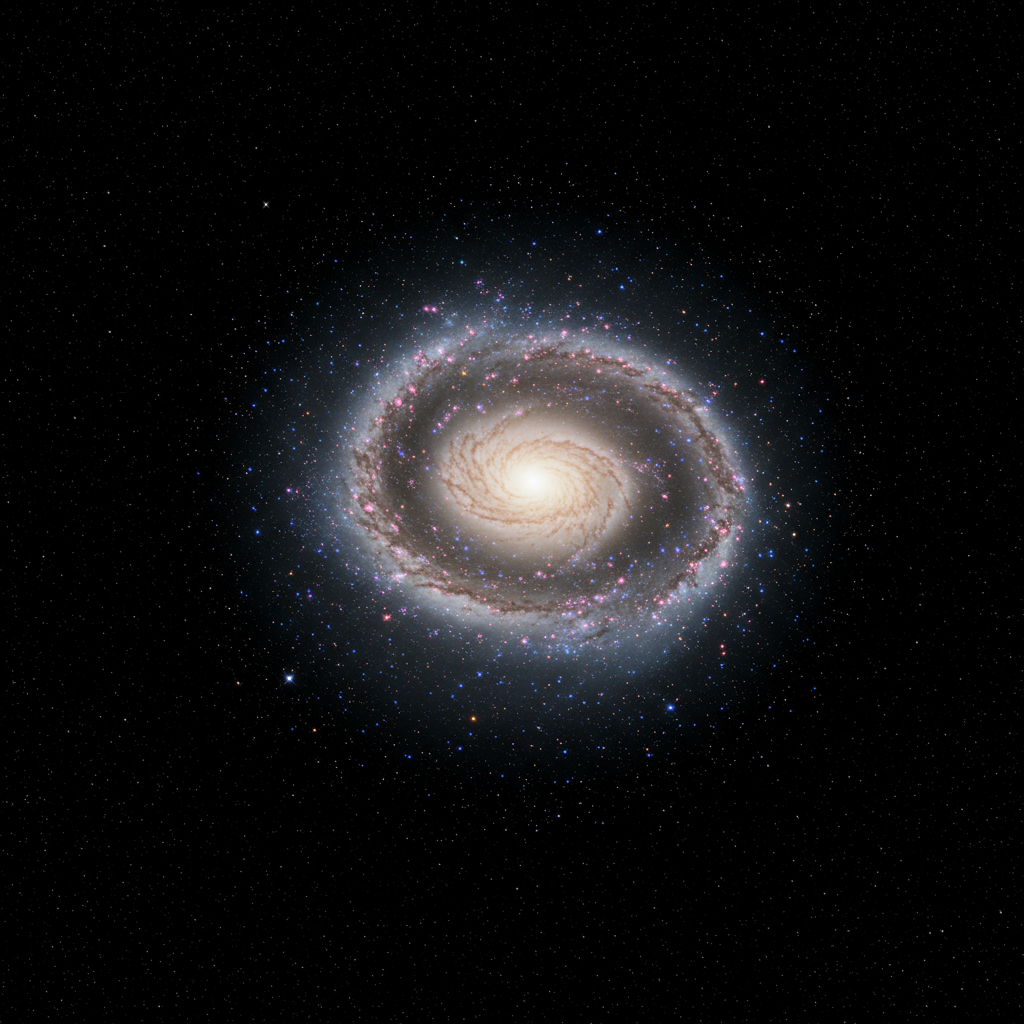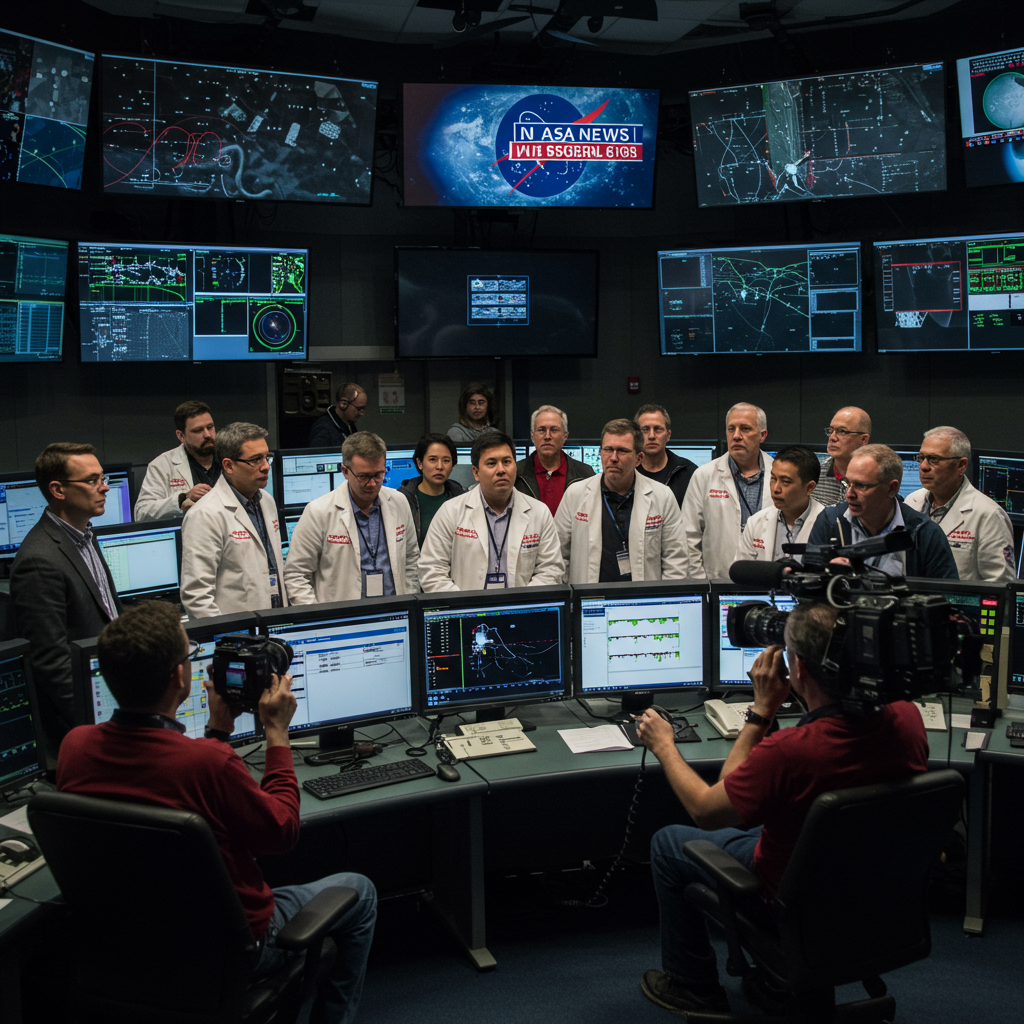Imagine living inside a giant, empty bubble billions of light-years across. That’s precisely what a groundbreaking new theory suggests about Earth and our entire galaxy, the Milky Way. This isn’t science fiction; it’s a serious hypothesis from astronomers proposing that our cosmic neighborhood sits near the center of a massive “cosmic void”—a region of space significantly less dense than the surrounding universe.
This bold idea, recently presented at the 2025 National Astronomy Meeting of the Royal Astronomical Society, aims to tackle one of cosmology’s most significant modern mysteries: the perplexing “Hubble tension.” It’s a puzzle related to how fast the universe is expanding, and if this void theory holds up, it could not only solve the tension but potentially confirm the age of the cosmos itself, estimated at around 13.8 billion years.
The Puzzle of the Expanding Universe: The Hubble Tension
The universe is getting bigger every second. Since Edwin Hubble first noted this expansion in 1929, scientists have sought to measure its speed using the Hubble constant. Calculating this constant involves measuring how far away cosmic objects are and how fast they appear to be moving away from us.
However, recent, precise measurements have revealed a frustrating problem. When cosmologists use data from the early universe, like the cosmic microwave background radiation (the “afterglow” of the Big Bang) and extrapolate its expansion rate based on the standard cosmological model, they predict a slower expansion speed for the present-day universe. This prediction conflicts sharply with observations of the expansion rate in the nearby universe, which appear significantly faster. This major discrepancy is known as the Hubble tension. It’s like predicting a car’s speed based on how fast it left the starting line billions of years ago, only to find it’s going much faster right now based on local radar.
Could We Be Inside a Cosmic Bubble?
Dr. Indranil Banik, a researcher at the University of Portsmouth, and his team propose a radical explanation for this discrepancy. He suggests our galaxy might reside near the heart of an immense, low-density region—a local cosmic void.
Think about gravity. Denser regions of space have stronger gravitational pull. If we are inside a vast area with less matter, the gravity from the much denser cosmic structures outside this void would pull matter away from the void’s center. This outward pull would cause objects within the void to accelerate away from the center (where we’re hypothetically located) faster than they otherwise would. From our perspective inside the void, this would make everything around us seem to be rushing away at an unexpectedly high speed, creating the illusion of a faster local expansion rate – exactly what is observed and contributes to the Hubble tension.
Listening to the “Sound of the Big Bang” for Clues
Crucial evidence presented by the team comes from analyzing baryon acoustic oscillations (BAOs). These are essentially remnants of sound waves that rippled through the scorching hot, early universe before it cooled down enough for atoms to form. When the universe cooled, these ripples became “frozen” in the distribution of matter.
BAOs act as a cosmic “standard ruler.” Because we know the physical size of these features imprinted in the early universe, observing their apparent size in the present-day universe helps astronomers trace the expansion history. A local cosmic void, Banik explains, would subtly distort this measurement. The gravitational pull of the denser regions surrounding the void would slightly increase the redshift of galaxies within the void (redshift indicates how fast an object is moving away), altering the observed relationship between the BAO’s angular scale and redshift.
Analyzing decades of BAO data, the team found compelling support for their hypothesis. Their model, which includes Earth being near the center of a cosmic void, is estimated to be a staggering one hundred million times more likely than a standard void-free model when fitted to observations from the Planck satellite, which precisely measured the cosmic microwave background radiation. This statistically significant finding makes the void theory a powerful potential solution to the Hubble tension.
The Proposed Void: Size and Scale
For this theory to fit the observational data, the proposed cosmic void would need to be incredibly large. Scientists estimate it would have a radius of roughly one billion light-years. Within this vast expanse, the matter density—the amount of stuff like galaxies, stars, and dark matter—would be about 20% lower than the average density found throughout the universe.
While previous studies have noted a somewhat lower density of galaxies in our immediate cosmic neighborhood, the existence of a void this size and depth is a significant claim. It partly conflicts with the standard cosmological model, which generally predicts a much more uniform distribution of matter when viewed on such immense scales. This is why the theory remains a subject of active research and debate within the scientific community.
Testing the Hypothesis
Given the intriguing support from BAO data and the controversial nature of such a large void, the next critical step for Banik and his team is to test their model against other independent methods of measuring the universe’s expansion. One such method involves using “cosmic chronometers.”
Cosmic chronometers are specific types of ancient galaxies that stopped forming stars long ago. By analyzing the light from these galaxies, astronomers can accurately determine their age. Combining their age with their measured redshift provides another way to reconstruct the history of the universe’s expansion over billions of years, offering an independent check on the expansion rate compared to early universe data and local measurements. If the void model accurately predicts the expansion history revealed by cosmic chronometers, it would significantly strengthen the theory.
Rethinking Our Place in the Cosmos
If this theory is confirmed, it would mark a major breakthrough in cosmology, potentially resolving the stubborn Hubble tension. But it also carries profound implications for how we view our place in the cosmos. For centuries, science has gradually shifted our perspective from being at the center of everything to being on an average planet, orbiting an average star, within an average galaxy.
Discovering that our home galaxy might be nestled inside a gigantic, relatively empty bubble adds another layer to this cosmic address. It suggests our local cosmic environment might be far from average. While perhaps not making us “special” in a fundamental sense, it means our local experience of the universe – particularly its expansion rate – could be influenced by our unique position within this vast structure.
This concept ties into broader philosophical questions about humanity’s place in the universe, a topic sometimes explored through ideas like the Fermi Paradox – the question of why, among billions of stars and planets, we haven’t found evidence of other intelligent life. Being in a potentially unique cosmic structure like a void adds another layer to the vastness and complexity we must navigate in understanding our existence. It reminds us that even in the age of advanced cosmology, the universe holds surprising structures and that our perspective from Earth continues to shape our understanding of the grand cosmic design.
## Frequently Asked Questions
What is a cosmic void and how could it affect the universe’s expansion?
A cosmic void is a large region of space with significantly lower-than-average density of matter, such as galaxies and dark matter. If Earth and the Milky Way are located inside such a void, especially near its center, the stronger gravitational pull from the denser regions surrounding the void would draw matter outwards. This would cause objects within the void to move away from the center faster than expected in a uniformly dense universe, making the universe’s local expansion rate appear accelerated from our perspective.
What is the evidence supporting the theory that Earth is in a cosmic void?
A primary piece of evidence comes from analyzing Baryon Acoustic Oscillations (BAOs), which act as cosmic “standard rulers.” Researchers found that a cosmological model including a local void fits the BAO data much better than a void-free model. Specifically, a model incorporating a void was found to be a hundred million times more likely than a standard model when compared to observations from the Planck satellite’s measurements of the cosmic microwave background.
What is the Hubble tension, and how might a cosmic void resolve it?
The Hubble tension is a significant discrepancy between different measurements of the universe’s expansion rate. Measurements based on the early universe (like the cosmic microwave background) predict a slower current expansion rate than measurements taken from the more recent, nearby universe. The theory that Earth is inside a cosmic void proposes a solution: the apparent faster expansion observed locally is not the true universal rate, but rather an effect of being inside a low-density region where gravity pulls matter outwards, making nearby objects recede faster than average.
Conclusion
The hypothesis that Earth and the Milky Way reside within a colossal cosmic void offers a compelling potential resolution to the perplexing Hubble tension, one of cosmology’s most pressing problems. Supported by analysis of baryon acoustic oscillations, this theory suggests the local universe expands faster than average because of our position within this immense, low-density bubble. While challenging the standard cosmological model’s view of large-scale uniformity, the theory presents a testable explanation. As scientists continue to probe the cosmos with tools like cosmic chronometers, the true nature of our cosmic neighborhood and its role in the universe’s expansion will become clearer, potentially forcing us to fundamentally rethink our address in the vast, evolving tapestry of space.



